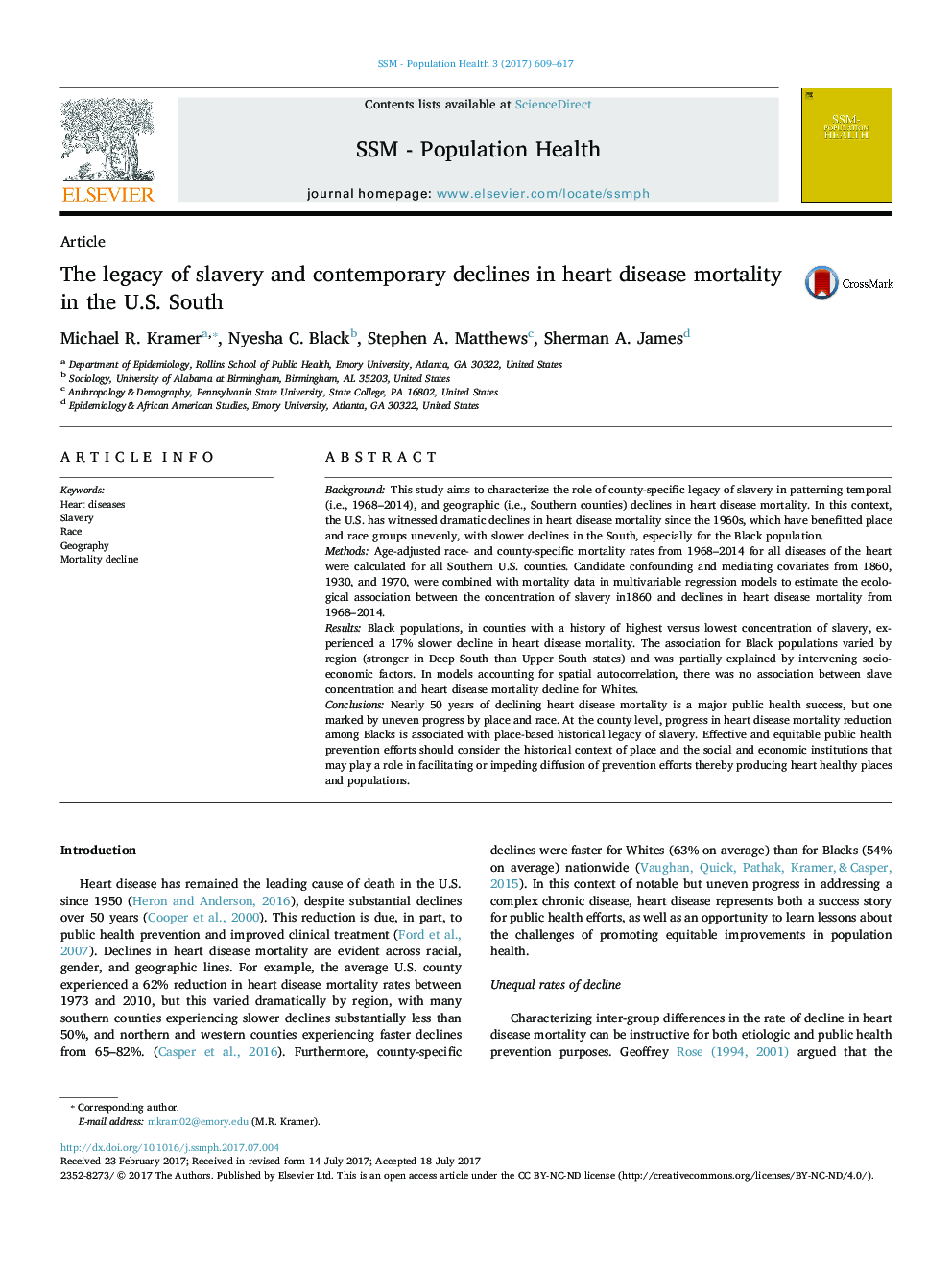| Article ID | Journal | Published Year | Pages | File Type |
|---|---|---|---|---|
| 5123293 | SSM - Population Health | 2017 | 9 Pages |
â¢The pace of reductions in heart disease mortality varies by place and race.â¢The legacy of slavery provides a foundation for understanding those differences.â¢Black mortality declined slower in counties where slave concentrations were higher.â¢The slavery-heart disease association is explained in part by socioeconomic factors.
BackgroundThis study aims to characterize the role of county-specific legacy of slavery in patterning temporal (i.e., 1968-2014), and geographic (i.e., Southern counties) declines in heart disease mortality. In this context, the U.S. has witnessed dramatic declines in heart disease mortality since the 1960s, which have benefitted place and race groups unevenly, with slower declines in the South, especially for the Black population.MethodsAge-adjusted race- and county-specific mortality rates from 1968-2014 for all diseases of the heart were calculated for all Southern U.S. counties. Candidate confounding and mediating covariates from 1860, 1930, and 1970, were combined with mortality data in multivariable regression models to estimate the ecological association between the concentration of slavery in1860 and declines in heart disease mortality from 1968-2014.ResultsBlack populations, in counties with a history of highest versus lowest concentration of slavery, experienced a 17% slower decline in heart disease mortality. The association for Black populations varied by region (stronger in Deep South than Upper South states) and was partially explained by intervening socioeconomic factors. In models accounting for spatial autocorrelation, there was no association between slave concentration and heart disease mortality decline for Whites.ConclusionsNearly 50 years of declining heart disease mortality is a major public health success, but one marked by uneven progress by place and race. At the county level, progress in heart disease mortality reduction among Blacks is associated with place-based historical legacy of slavery. Effective and equitable public health prevention efforts should consider the historical context of place and the social and economic institutions that may play a role in facilitating or impeding diffusion of prevention efforts thereby producing heart healthy places and populations.
Graphical abstractDownload high-res image (454KB)Download full-size image
